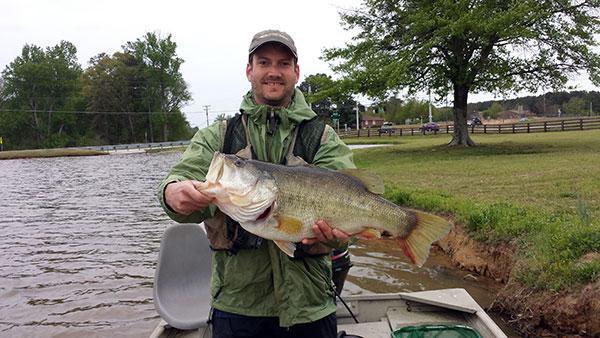
If you are interested in fishing, then you have probably heard the phase “Catch and Release” as it relates to catching and then releasing your catch. Well, the concept of catch and release bass angling was not conceived as a conservation measure but was actually put into play in the early 1970s by a businessman wishing to gain acceptance of organized tournament angling. Early bass tournaments received stiff opposition from local anglers, sports writers, and civic organizations due to the large numbers fish that were harvested. The tournament organizers realized that the harvest of bass caught during a tournament was not important to the business’ success. Promoting the practice of catch and release (C&R) bass angling was a business decision to get buy-in from the public on the fishing tournaments. It is interesting to note that the first scientific study on the practice of C&R was conducted at Lake Lanier in 1972. Interestingly enough, this study showed that there were no measurable impacts to the largemouth bass populations when the fish were harvested as a result of tournament bass fishing on the lake.
The most fundamental principle of managing a productive sportfish population in a lake or a pond is BALANCE. This term relates to the predator-prey relationship between the largemouth bass being the predator, and in most cases the bluegill and/or related species being the prey. The important element of this relationship is to have both sufficient numbers and sizes of prey in order to support the number and sizes of the predator population within a lake or pond. If proper balance is not maintained then there will be a subsequent impact to the fish population as a whole.
If you release all bass to prevent harm to the population, a review of the rationale that allows harvest may help. The reasons for largemouth bass death can be placed into two categories. Natural mortality covers reasons associated with disease, injury, and age. Natural mortality is a very subtle process that is present in every fish population. The second category is fishing mortality or death due to harvest. The sum of these two causes is known as total mortality. Natural and fishing mortality are compensatory. Regulated fishing mortality replaces natural mortality rather than increasing total mortality. Natural mortality is driven by density factors such that natural mortality and fishing mortality are compensatory since harvest serves to reduce the overall density of the population. The compensatory mortality phenomena allows some harvest without harm to the population. Fisheries biologists craft sportfish management recommendations to keep fishing mortality below the level that increases the total mortality.
The acceptance of the C&R ideology among today’s anglers is somewhat a reflection on our fast paced society. Its’ application has progressed from fishing tournaments to an “encouraged” practice for every day fishing activities. The days of rounding up a stringer of fish for an evening fish fry have sadly become days of the past.

Before C&R the most common problem with small impoundment fish populations was an excessive abundance of small bluegill due to the overharvest of largemouth bass. Today the most common population structure in small impoundments is an overabundance of small largemouth bass as a result of no harvest. The combination of bluegill and largemouth bass in the absence of other species is a “man-made” fish population created for small impoundments. Actually, the bass were an addition after research at Auburn University showed that bluegill did not perform well when stocked without a predator species. The species combination works very well when bass harvest is part of the management plan. An inherent problem of excessive bass population numbers occurs in the absence of bass harvest. The bluegill’s ability to spawn multiple times during the summer period allows excessive numbers of young bass to populate the pond or lake. Unfortunately, the bluegill population is not able to produce enough forage to move the bass beyond 8 to 10 inches in size and you end up with a lot of undersized bass. The solution in most cases is to implement the process of a selective harvest of the small bass (<14 inches) to reduce intraspecific competition for food.
Manipulating predator-prey balance through selective harvest of predators is a powerful fisheries management tool. The wholesale use of C&R practices discards this tool and works against maintaining the proper balance of the population. There is a bass population at lake somewhere that all bass caught should be released. There is also one where all bass caught should be harvested. Most populations, however, are somewhere between these two extremes and could benefit from a selective harvest protocol. And as the late Paul Harvey used to say, “Now You Know The Rest of The Story!” So the question is – when on the water, do you manage or simply just fish?


